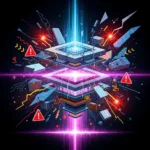The AI Revolution: How Artificial Intelligence is Reshaping Software Development Methodologies
The software development world has witnessed a fascinating evolution of methodologies over the past several decades. From the structured, sequential approach of Waterfall to the flexible, iterative nature of Agile, each methodology emerged as a response to the unique challenges and opportunities of its time. Today, as artificial intelligence transforms how we write code, we’re witnessing another methodological shift that challenges conventional wisdom about software development practices.
The Foundation: Why Waterfall Made Perfect Sense
Waterfall methodology wasn’t born in a vacuum—it was inspired by disciplines where getting everything right the first time was literally a matter of life and death. When civil engineers design a bridge, they don’t build half of it, test it with traffic, then iterate on the foundation. The physics of structural engineering demands comprehensive planning, detailed specifications, and sequential execution because the cost of failure is catastrophic, and changes become exponentially more expensive once construction begins.
This approach made perfect sense for early software development when:
- Hardware was expensive and inflexible
- Compilation times were measured in hours, not seconds
- Deployment meant physically shipping software on disks
- Changes required complete rebuilds and redistribution
Consider the development of NASA’s Apollo Guidance Computer software in the 1960s. The 73KB of code that helped land humans on the moon was meticulously planned, documented, and tested because there was literally no room for post-deployment patches 240,000 miles from Earth.
The Software Revolution: Why Agile Took Over
As software became more malleable and deployment became digital, the rigid constraints that made Waterfall necessary began to disappear. Software’s inherent flexibility—its ability to be modified, tested, and deployed rapidly—made iterative development not just possible but superior.
Agile methodologies emerged because software development is fundamentally different from bridge building:
- Requirements evolve as users interact with early versions
- Market conditions change rapidly
- Technology stacks advance continuously
- User feedback provides invaluable insights that can’t be predicted upfront
Companies like Spotify revolutionized music consumption by rapidly iterating based on user behavior, while Netflix continuously deploys thousands of changes per day. These successes were built on Agile principles: embrace change, deliver working software frequently, and collaborate closely with customers.
The AI Paradox: Why We’re Seeing a Return to Waterfall
Here’s where the story takes an unexpected turn. As AI-powered development tools become more sophisticated, we’re witnessing a subtle but significant shift back toward more Waterfall-like approaches. This isn’t regression—it’s adaptation to AI’s unique characteristics.
The Precision Requirement
AI models, particularly large language models used for code generation, perform dramatically better with detailed, well-structured inputs. Consider these two prompts:
Vague Agile-style prompt: “Create a user authentication system”
Detailed Waterfall-style prompt: “Create a Node.js user authentication system using JWT tokens, with the following requirements: bcrypt password hashing with salt rounds of 12, email validation using regex, password requirements of minimum 8 characters including uppercase, lowercase, numbers and special characters, rate limiting of 5 attempts per minute, PostgreSQL database integration with users table containing id (UUID), email (unique), password_hash, created_at, and updated_at fields, RESTful API endpoints for register, login, logout, and profile retrieval, proper error handling with specific HTTP status codes, and comprehensive input validation.”
The second prompt consistently produces more accurate, complete, and maintainable code because AI thrives on specificity and context.
Real-World Examples of the AI-Waterfall Renaissance
GitHub Copilot and Documentation: Teams using GitHub Copilot report that maintaining detailed inline comments and comprehensive documentation significantly improves code suggestions. This mirrors Waterfall’s emphasis on thorough documentation before implementation.
Automated Code Generation Pipelines: Companies like Replit and CodeWhisperer work best when given comprehensive specifications upfront. Anthropic’s Claude, for instance, generates more robust applications when provided with detailed requirements, user stories, and technical specifications in a single, comprehensive prompt rather than through iterative refinement.
Enterprise AI Adoption: Large enterprises implementing AI-assisted development are finding success by creating detailed “AI requirement documents” that specify not just what the software should do, but how it should be structured, what patterns to follow, and what constraints to respect.
The Current State: Hybrid Approaches Emerging
Forward-thinking development teams are already adapting to this new reality by creating hybrid methodologies:
“Agile Planning, AI Execution”: Teams spend more time in planning phases, creating detailed specifications and requirements, then use AI to rapidly generate initial implementations that would have taken weeks in traditional Agile sprints.
“Waterfall Requirements, Agile Refinement”: Organizations create comprehensive requirement documents optimized for AI consumption, then use traditional Agile practices to refine and improve the AI-generated code through human oversight and iteration.
The Future: When AI Becomes Truly Conversational
As AI systems become more sophisticated and better at understanding context, maintaining conversation history, and reasoning about partial information, we may see another pendulum swing back toward Agile-like practices.
Future AI development assistants might be able to:
- Maintain context across multiple development sessions
- Understand implicit requirements from user behavior
- Suggest improvements based on emerging patterns
- Adapt code architecture as requirements evolve
Imagine an AI pair programmer that truly understands your codebase, remembers previous conversations, and can make intelligent assumptions about incomplete requirements. In such a future, the iterative, conversational approach of Agile might once again become optimal.
Practical Implications for Today’s Teams
For development teams navigating this transition, consider these strategies:
- Invest in Better Requirements Gathering: The time spent creating detailed, AI-friendly specifications pays dividends in code quality and development speed.
- Create AI-Optimized Documentation: Write requirements documents that are both human-readable and AI-parseable, with clear structure and comprehensive context.
- Develop Prompt Engineering Skills: Treat prompt crafting as a core technical skill, similar to how we once emphasized database design or API architecture.
- Maintain Human Oversight: Use AI for rapid prototyping and initial implementation, but rely on human expertise for architecture decisions and quality assurance.
Conclusion: Embracing Methodological Evolution
The emergence of AI in software development reminds us that methodologies aren’t ideological choices—they’re practical responses to technological realities. Just as Agile emerged when software became more flexible, the current shift toward more structured, specification-heavy approaches reflects AI’s current capabilities and limitations.
The key insight isn’t that Waterfall is “better” than Agile, or vice versa. It’s that the most effective teams adapt their methodologies to leverage the tools and technologies available to them. As AI continues to evolve, so too will our development practices.
The future belongs to teams that can fluidly move between methodological approaches, using Waterfall-inspired precision when working with AI, Agile flexibility when iterating on human insights, and hybrid approaches that combine the best of both worlds. In this new era of AI-assisted development, methodological agility—the ability to choose the right approach for the right situation—may be the most valuable skill of all.
Software enthusiast with a passion for AI, edge computing, and building intelligent SaaS solutions. Experienced in cloud computing and infrastructure, with a track record of contributing to multiple tech companies in Silicon Valley. Always exploring how emerging technologies can drive real-world impact, from the cloud to the edge.

